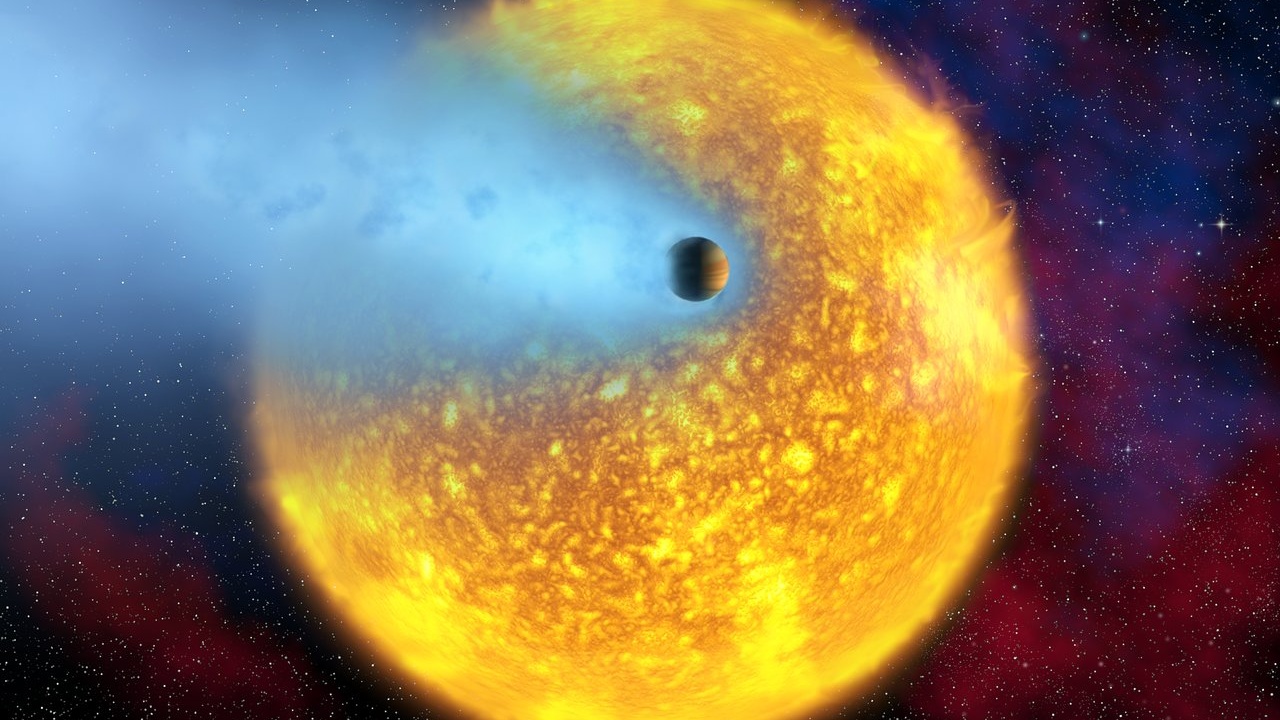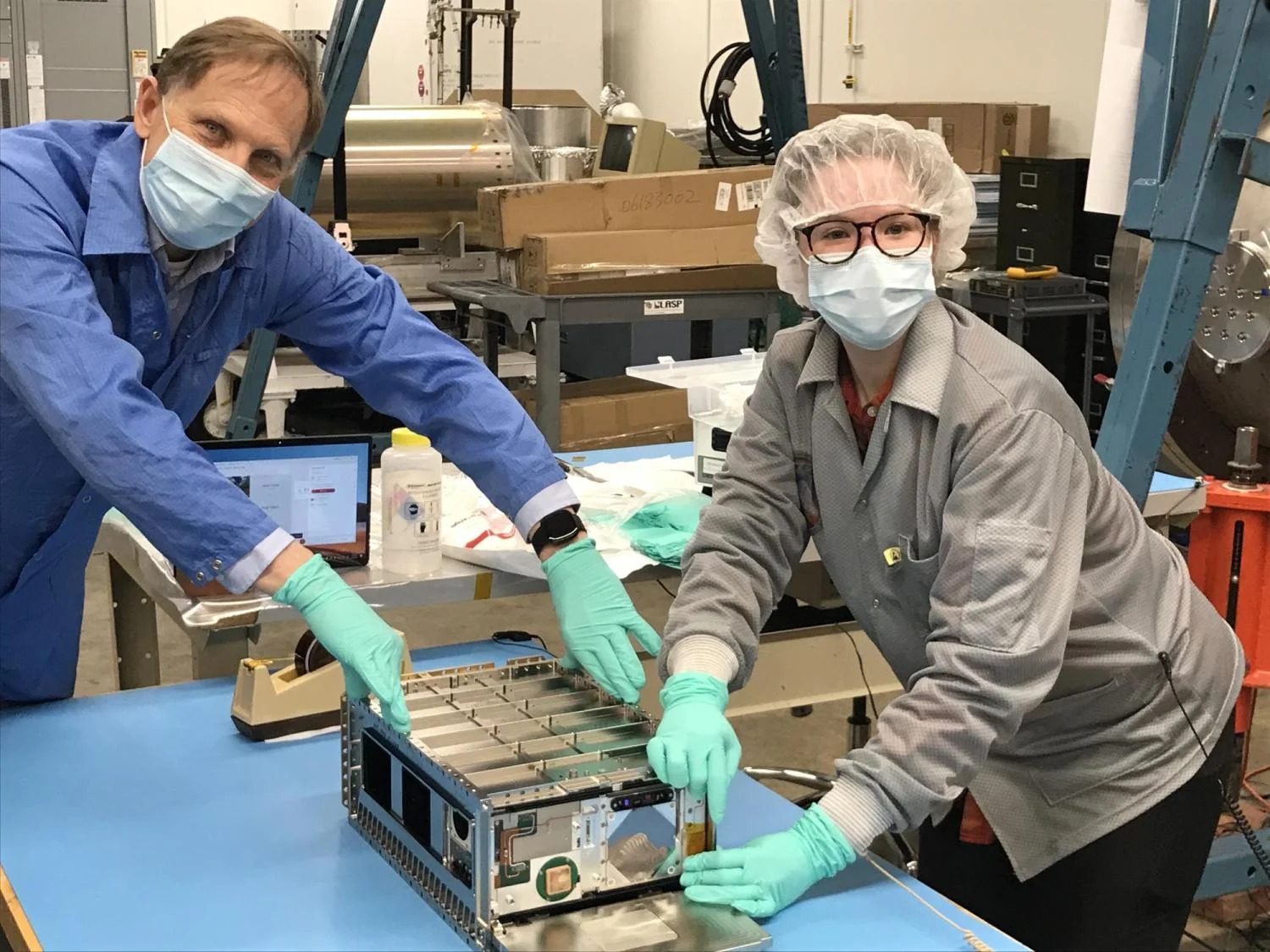Tiny 14-inch satellite studies 'hot Jupiter' exoplanets evaporating into space
A small ultraviolet telescope in a cubesat has been watching the atmospheres of some hot Jupiters evaporate.

While watching the atmosphere of seven "hot Jupiters" blow away, a suitcase-sized cubesat has found some surprising variations in how quickly the giant, bloated worlds are evaporating.
CUTE, which stands for the Colorado Ultraviolet Transit Experiment, was launched in September 2021 and orbits the Earth at an altitude of 525 kilometers (326 miles). It is armed with a single ultraviolet CCD camera that watches for transits of giant exoplanets.
Hot Jupiters are gas giants like Jupiter, except for the fact they migrated closer to their respective stars over time and ended up orbiting at a distance of just a few million kilometers. Being so close to their stars, heat causes the gases of these planets' atmospheres to expand. The hotter the atmosphere, the more bloated a planet becomes — and the more bloated and diffuse a planet becomes, the easier it is for a star's radiation wind, like the sun's solar wind, to blow the atmosphere away. Often, these evaporating worlds sport comet-like tails formed by their atmospheres streaming away.
CUTE has studied seven hot Jupiters so far, watching them transit their stars and detecting the silhouettes of gases such as iron, magnesium and hydroxyl. Such detection was possible because, as material gets blown away from the planets, that material absorbs some of the starlight. Scientists are therefore able to look at absorption patterns and deduce chemical signatures. However, of these seven worlds, some seem to be evaporating while others are holding firm in the face of the radiation onslaught from their star.
"The planets seem to be coming in all of the flavors," Kevin France, the mission's principal investigator from the University of Colorado, Boulder, said in a statement.
Related: Mars' atmosphere swelled like a balloon when solar wind stopped blowing. Scientists are thrilled
For example, CUTE watched the hot Jupiter WASP-189b transit its star, which is 300 light-years away from us in the constellation of Libra, the Scales. CUTE discovered that WASP-189b is losing material from its atmosphere at the incredible rate of 400 million kilograms (900 million pounds) per second.
Breaking space news, the latest updates on rocket launches, skywatching events and more!
On the other hand, another hot Jupiter designated MASCARA-4b (MASCARA stands for Multi-site All-Sky Camera), which is three times the mass of Jupiter and orbiting a star 557 light-years away, was found to not be losing any detectable gas at all.
In the middle of these two extremes is another three-Jupiter-mass planet, KELT-9b (named after the Kilodegree Extremely Little Telescope in Arizona and South Africa). It is located 667 light-years away, and is actually the hottest exoplanet known with a dayside temperature of 4,300 degrees Celsius (7,800 degrees Fahrenheit). Yet. the team saw, it was only losing a modest amount of gas from its atmosphere.
Although there are no firm explanations yet for why some planets seem to be blowing in the stellar breeze while others are not, France suspects it is a combination of a planet's gravitational strength in holding onto its atmosphere and the amount of activity on the star that controls the fierceness of the gusts of radiation.
CUTE has many more hot Jupiters to target before its mission ends in 2027, at which point the little 14-inch-long (35.6-centimeter-long) cubesat will fall back into Earth's atmosphere and simultaneously burn up.
Beyond hot Jupiters, the mission, which was partly built by undergraduate and graduate students at the University of Colorado, Boulder, might also help astronomers better understand smaller worlds too.
"There's a lot of evidence that suggests that super-Earths begin as planets the size of Neptune with large, puffy atmospheres, which then lose so much mass that all that is left is the rocky core and possibly a thin atmosphere," said France.
Even in our own solar system, the red planet Mars has lost much of its water and atmosphere in general to the solar wind, and continues to do so as NASA’s MAVEN mission has been measuring. Understanding the process on the large scales of hot Jupiters could provide insights into how smaller worlds like Mars are rendered airless.
The findings from CUTE were presented at the 2023 meeting of the American Geophysical Union, in San Francisco.

Keith Cooper is a freelance science journalist and editor in the United Kingdom, and has a degree in physics and astrophysics from the University of Manchester. He's the author of "The Contact Paradox: Challenging Our Assumptions in the Search for Extraterrestrial Intelligence" (Bloomsbury Sigma, 2020) and has written articles on astronomy, space, physics and astrobiology for a multitude of magazines and websites.


